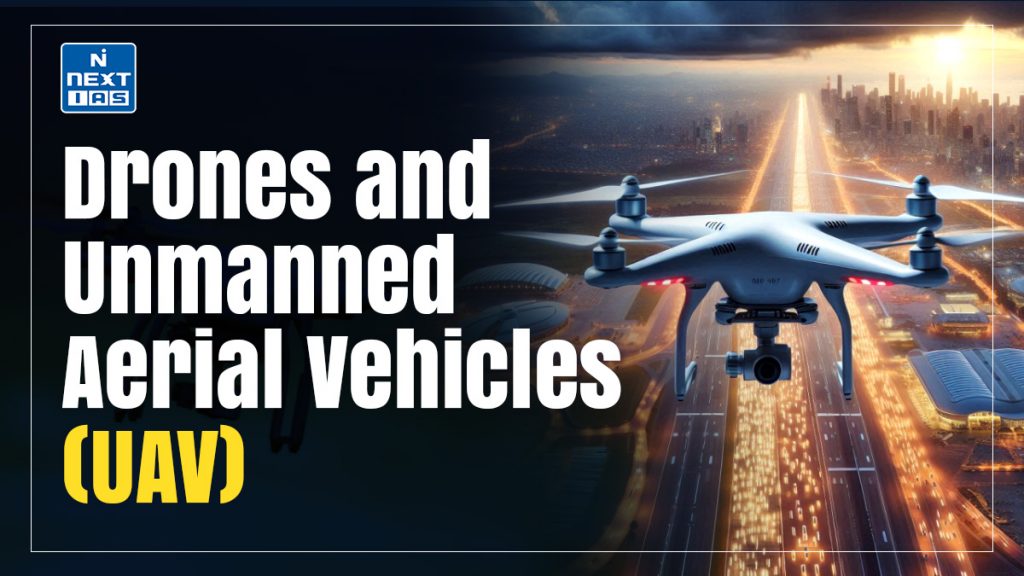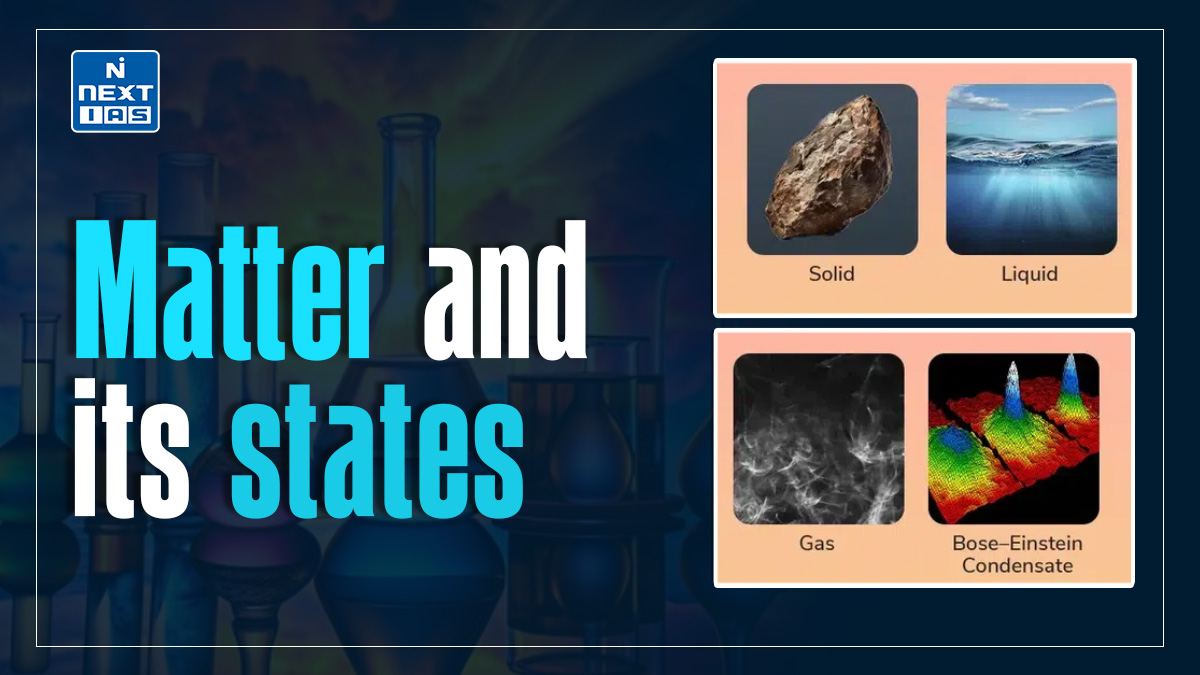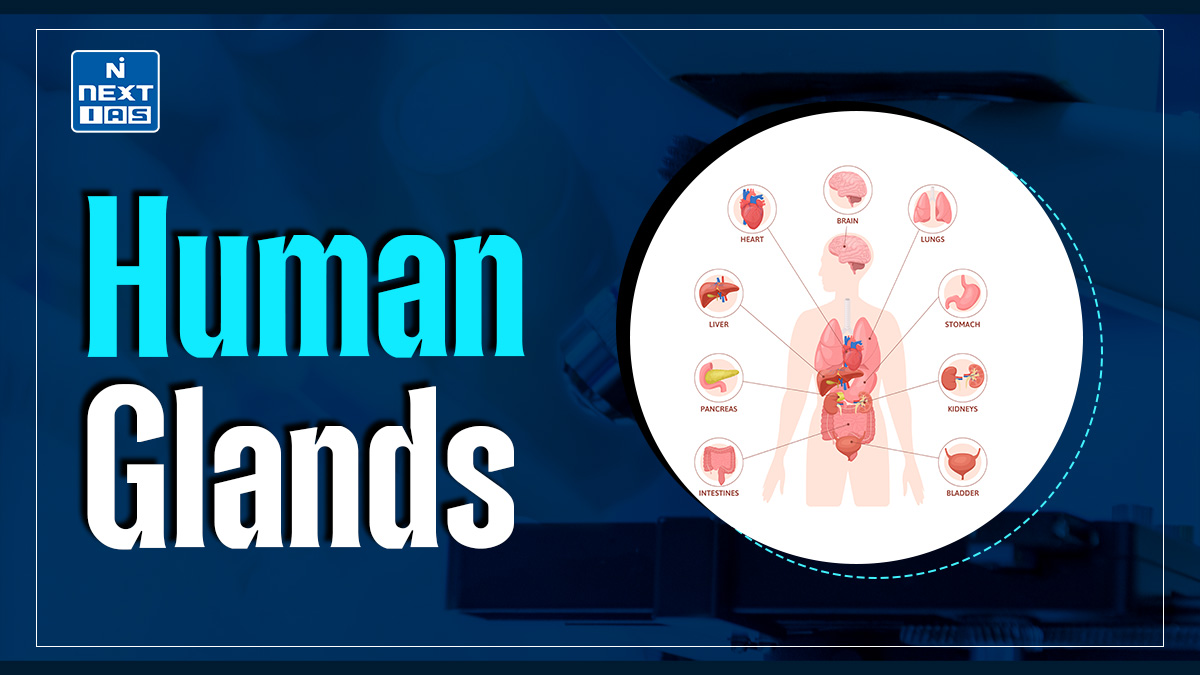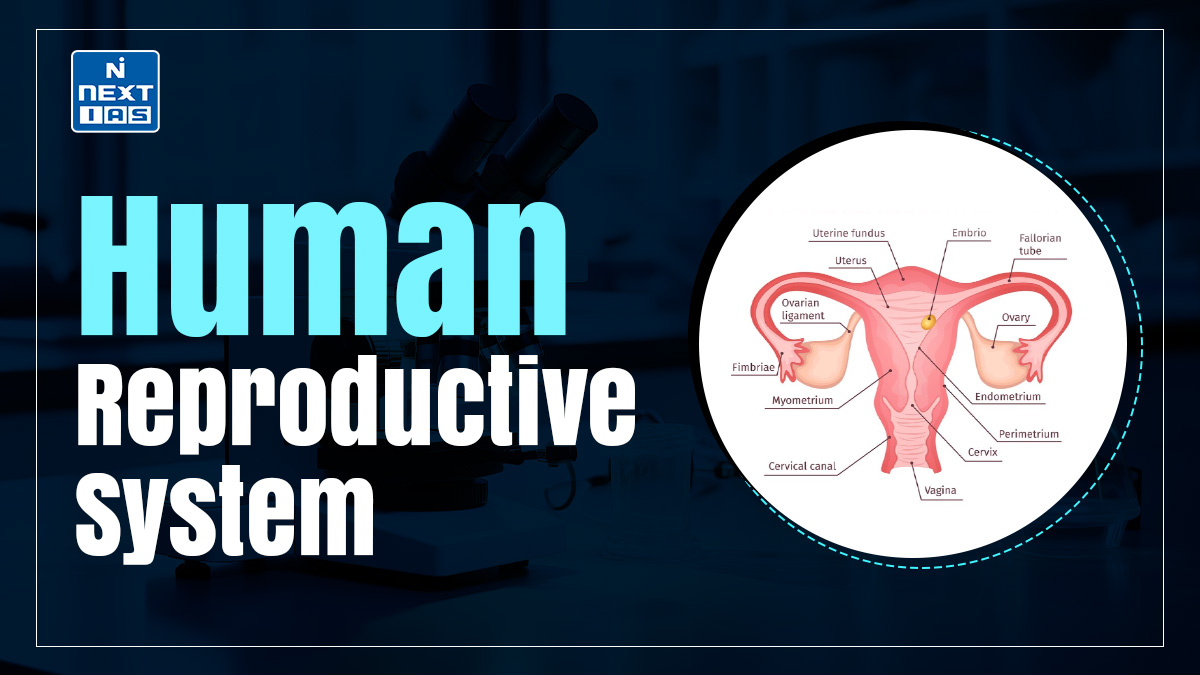
Drones, or Unmanned Aerial Vehicles (UAVs), are remotely piloted aircraft used for diverse purposes, from military reconnaissance to commercial deliveries. Equipped with cameras, sensors, and GPS, they offer precise, real-time data collection and operation in hard-to-reach areas, making them valuable tools in defense, agriculture, disaster response, and logistics.
What are Drones and Unmanned Aerial Vehicles (UAV)?
- Drones, also known as Unmanned Aerial Vehicles (UAVs), are aircraft operated without an onboard human pilot, instead being controlled remotely by operators or programmed to fly autonomously.
- These versatile machines come in various sizes and designs, tailored for purposes ranging from military reconnaissance and surveillance to commercial applications like aerial photography, agriculture, and package delivery.
- Equipped with advanced sensors, cameras, and navigation systems, drones can perform tasks in environments that are hazardous, hard to reach, or require precise monitoring.
- Their ability to operate efficiently at various altitudes and in diverse weather conditions makes them valuable assets across fields, including law enforcement, environmental monitoring, construction, and emergency response.
Types of Drones and Unmanned Aerial Vehicles (UAV)
Drones and Unmanned Aerial Vehicles (UAVs) come in various types, each designed for specific purposes. Some common categories include:
- Fixed-Wing UAVs: These resemble traditional airplanes with a fixed wing and are ideal for long-range flights, surveillance, and mapping. They are often used in military, agricultural, and environmental monitoring applications.
- Rotary-Wing UAVs: These include helicopters and quadcopters (with four rotors). They are highly maneuverable, suitable for tasks requiring vertical takeoff and landing (VTOL), such as aerial photography, search and rescue, and infrastructure inspections.
- Hybrid UAVs: Combining features of both fixed-wing and rotary-wing drones, these UAVs offer the endurance of fixed-wing aircraft with the vertical takeoff/landing capability of rotorcraft. They are useful for missions requiring flexibility, like surveillance or cargo delivery in challenging terrain.
- Nano or Micro Drones: Tiny UAVs, often used for research, educational purposes, or simple recreational activities. Despite their small size, some can be equipped with cameras or sensors for specific tasks, such as indoor inspections or personal entertainment.
- Combat Drones: Primarily used by military forces, these UAVs are equipped for offensive operations. They can carry payloads like bombs or missiles, perform surveillance, and gather intelligence, enhancing strategic operations with minimal risk to personnel.
- Commercial Drones: Used for business purposes like aerial photography, surveying, mapping, delivery, and agriculture. These drones are often equipped with high-definition cameras and sensors for precise data collection, helping in real-time monitoring and decision-making.
- Delivery Drones: Specially designed to carry and deliver packages, medical supplies, or food, these UAVs are gaining traction in logistics, offering a faster and more efficient way of transporting goods over short distances.
- Industrial Drones: Built for specific industrial applications, such as monitoring power lines, inspecting infrastructure, surveying land, or assessing oil and gas pipelines. They often feature advanced sensors and cameras for detailed inspections in hard-to-reach places.
These types of drones are evolving with advancements in technology, increasing their roles in defense, commerce, research, and everyday life.
Application of Drones and Unmanned Aerial Vehicles (UAV)
Drones and Unmanned Aerial Vehicles (UAVs) have a wide range of applications across various industries:
- Military and Defense: UAVs are used for surveillance, intelligence gathering, reconnaissance, and targeted strikes. They provide real-time data and reduce risks to human pilots.
- Agriculture: Drones are used for crop monitoring, spraying pesticides, and assessing soil health. They enable farmers to efficiently manage large fields with precision.
- Disaster Management: Drones assist in search and rescue operations, delivering supplies, and assessing damage in disaster-stricken areas, especially when access is difficult or dangerous.
- Delivery Services: UAVs are employed for small package delivery, allowing businesses to reach remote or hard-to-reach locations quickly, reducing delivery times and costs.
- Environmental Monitoring: Drones are used to monitor wildlife, assess environmental changes, and track deforestation, providing crucial data for conservation efforts.
- Infrastructure Inspection: Drones are increasingly used to inspect bridges, power lines, and buildings, offering a safer and more cost-effective alternative to traditional methods.
- Film and Photography: UAVs equipped with high-quality cameras are widely used in film production, photography, and media, providing aerial shots and footage that were once costly or impossible to capture.
- Surveying and Mapping: Drones are used in geospatial surveys for topographic mapping, land surveying, and 3D modeling, offering high accuracy and efficiency.
These versatile devices continue to evolve, with expanding applications across various sectors, making them essential tools in modern technology.
Challenges for Drones and Unmanned Aerial Vehicles (UAV)
- Drones and Unmanned Aerial Vehicles (UAVs) face several challenges, including regulatory restrictions, airspace management issues, and safety concerns.
- Legal frameworks often struggle to keep pace with rapid technological advancements, leading to uncertainty.
- Privacy violations, security risks, and the potential for misuse in surveillance or attacks are additional concerns.
- Furthermore, limited battery life, weather sensitivity, and technical malfunctions can hinder UAV performance, while public perception of their use, especially in military or surveillance contexts, may create social and ethical challenges.
- The integration of drones into crowded airspace also remains a significant obstacle to widespread adoption.
Drone in India
- Drones in India have gained significant attention in recent years, with applications spanning various sectors, including agriculture, surveillance, defense, logistics, and filmmaking.
- The Indian government has recognized their potential and established guidelines through the Directorate General of Civil Aviation (DGCA) for regulating drone usage.
- India has seen increasing use of drones in agriculture for crop monitoring, pesticide spraying, and land mapping, improving productivity and reducing labor costs.
- In defense, drones are used for surveillance and reconnaissance, especially along the borders. Additionally, drones are employed for infrastructure inspection, disaster management, and delivery services, though the technology is still evolving.
- However, drone usage in India faces challenges such as stringent regulations, airspace restrictions, and concerns about safety and privacy. The government has been working on updating policies to facilitate drone innovation, including the release of the National Drone Policy.
- Despite these hurdles, the future of drones in India looks promising, with growing interest from both the public and private sectors.
Way Forward
- The future of drones and Unmanned Aerial Vehicles (UAVs) lies in further advancements in autonomy, artificial intelligence, and battery technology. As drones become more capable of performing complex tasks without human intervention, they will revolutionize industries such as agriculture, logistics, surveillance, and environmental monitoring.
- Integration into urban airspace will improve with advancements in air traffic management and regulatory frameworks. The use of drones in military operations will continue to grow, with applications in surveillance, combat, and search-and-rescue missions.
- Moreover, as regulations evolve, drones are expected to become more widespread in commercial sectors like e-commerce, healthcare, and infrastructure inspection, ensuring a broad, lasting impact across various industries.
Conclusion
- Drones and UAVs have revolutionized industries by enhancing efficiency, precision, and safety across various sectors. From military operations to commercial applications, their versatility continues to expand.
- As technology advances, these unmanned systems are set to play an even greater role in innovation, offering endless possibilities for future development.
Frequently Asked Questions (FAQs)
Who is the largest manufacturer of UAV?
The largest manufacturer of Unmanned Aerial Vehicles (UAVs) in the world is DJI (Da-Jiang Innovations), a Chinese company. DJI dominates the global UAV market, particularly in the commercial and consumer drone segments.
However, other manufacturers play significant roles in specific domains like military UAVs.
Which UAVs were developed by DRDO?
The Rustom series of UAVs, developed by India’s DRDO (Defence Research and Development Organisation), includes Rustom-I, Rustom-II (also called TAPAS-BH-201), and the Rustom-H. Designed for surveillance, reconnaissance, and target acquisition, these UAVs cater to military needs. Rustom-II, a medium-altitude long-endurance (MALE) UAV, is particularly notable for its advanced sensors and extended operational range.
Who is the world leader in drone technology?
The world leader in drone technology is DJI (Da-Jiang Innovations), a Chinese company renowned for its advanced consumer and commercial drones. DJI dominates the global market with cutting-edge features, user-friendly designs, and versatile applications in filmmaking, agriculture, surveying, and security, setting benchmarks in both hardware and software innovation.





